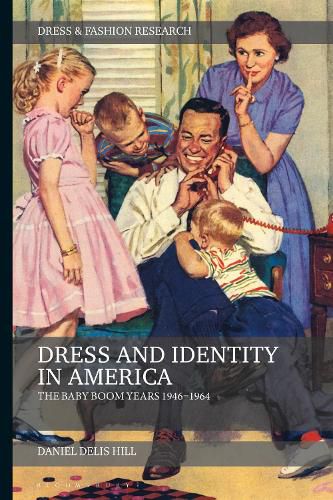Readings Newsletter
Become a Readings Member to make your shopping experience even easier.
Sign in or sign up for free!
You’re not far away from qualifying for FREE standard shipping within Australia
You’ve qualified for FREE standard shipping within Australia
The cart is loading…






Dress and Identity in America is an examination of the conservatism and materialism that swept across the country in the late 1940s through the 1950s-a backlash to the wartime tumult, privations, and social upheavals of the Second World War.
The study looks at how American men sought to recapture a masculine identity from a generation earlier, that of the stoic patriarch, breadwinner, and dutiful father, and in the process, became the men in the gray flannel suits who were complacently conventional and conformist. Parallel to that is a look at how American women, who had donned pants and went to work in wartime munitions factories or joined services like the WACS and WAVES, were now expected to stay at home as housewives and mothers, dressed in cinched, ultrafeminine New Look fashions.
As the Space Age dawned, their baby boom children rejected the conventions of their elders and experimented with their own ideas of identity and dress in an emerging era of counterculture revolutions.
$9.00 standard shipping within Australia
FREE standard shipping within Australia for orders over $100.00
Express & International shipping calculated at checkout
Dress and Identity in America is an examination of the conservatism and materialism that swept across the country in the late 1940s through the 1950s-a backlash to the wartime tumult, privations, and social upheavals of the Second World War.
The study looks at how American men sought to recapture a masculine identity from a generation earlier, that of the stoic patriarch, breadwinner, and dutiful father, and in the process, became the men in the gray flannel suits who were complacently conventional and conformist. Parallel to that is a look at how American women, who had donned pants and went to work in wartime munitions factories or joined services like the WACS and WAVES, were now expected to stay at home as housewives and mothers, dressed in cinched, ultrafeminine New Look fashions.
As the Space Age dawned, their baby boom children rejected the conventions of their elders and experimented with their own ideas of identity and dress in an emerging era of counterculture revolutions.